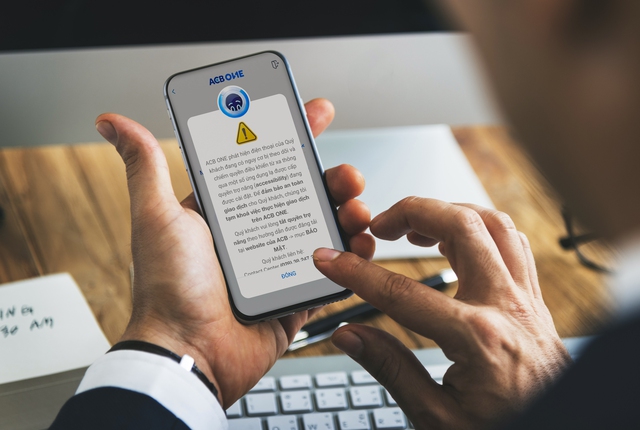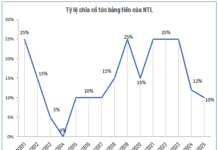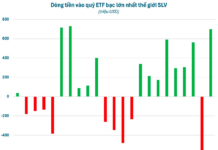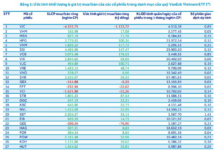It’s Not Just Accounts, Transactions Also Need to Be “Verified”
The introduction of biometric authentication by the State Bank of Vietnam is a timely move amid the rise in cybercrimes. According to Decision No. 2345/QD-NHNN, certain online transactions now require biometric authentication for account holder identification, eliminating fake accounts, and mitigating risks from identity theft and unauthorized transactions.

In reality, banks have also proactively enhanced security features to protect customers during digital transactions. For instance, ACB has taken the initiative to remove non-primary accounts through eKYC, Video Call Face Identity, and IDCheck methods, cross-referencing data with the Ministry of Public Security’s CCCD system. This effectively prevents identity fraud and updates the feature to automatically detect and warn about suspicious applications granted assistive access privileges, potentially taking over phone control and stealing bank account funds.
Decision No. 2345/QD-NHNN is crucial in safeguarding customer accounts during online payments. Even if identity information is stolen, it would be challenging for criminals to withdraw money. As a result, in July 2024, ACB introduced a face authentication and ACB Safekey combo, refining its multi-layered authentication system. ACB customers can rest assured that their accounts and transactions are “verified.” Nearly 800,000 ACB customers have successfully updated their biometric data as of now.
Facing Challenges with Biometric Authentication?
Explaining the difficulties some customers have faced in updating their biometric data, several banks mentioned their ongoing efforts to refine their software and support customers unfamiliar with technology. Customers can refer to their bank’s guidelines for a clearer understanding of the process.
However, customers should also be aware of common issues and their solutions when updating their authentication:
1. Device Incompatibility Error
This error occurs when a customer’s device lacks NFC reading capabilities. To address this, customers can register for face authentication on another device that supports NFC reading.
2. Screen Doesn’t Display the Capture Button
This issue may arise due to unsatisfactory capture conditions. Customers can adjust their face angle and lighting according to the on-screen instructions and then press capture.
3. Failed Chip Scanning/ID Card Reading
The primary cause of this error is a lost connection during the chip scanning process for face matching. Customers should close the app and restart the process, ensuring a stable connection when the card reading progress bar appears and keeping the CCCD and phone still during scanning.
4. “Failed Identification” Error
This error typically occurs when the identification information (face) does not match or the CCCD information differs from the identification data at the bank. Customers should contact their bank for timely assistance.
5. Face Authentication Fails, and a “Technical Error” Message Appears
This situation usually happens when there is a connection error on the device. Customers should disconnect from Wi-Fi, use 4G, and try again.

In addition to the measures implemented by the authorities and banks, ACB also advises customers to be vigilant and take responsibility for protecting their information. Customers should only update their biometric data through the ACB ONE app or at ACB transaction counters, avoiding any other websites or applications. ACB assures that digital banking remains a safe and convenient channel as long as customers adhere to basic safety principles to prevent potential risks.
For assistance with face authentication registration on ACB ONE, customers can contact the 24/7 Contact Center at 028 38 247 247 or (028) 35 14 54 86 or visit their nearest ACB branch or transaction office.
Tips for protecting your bank account during Tet to avoid being left empty-handed
To avoid hackers, experts recommend users to secure multiple layers of credit card information. Switching to biometric authentication will provide a safer way to protect online card information.
Surge in QR Payments Leads to Bank ATM Closures
By the end of January 2024, the market witnessed a decrease of 1.70% in the number of ATMs compared to the same period in 2023, with a total of 20,986 ATMs. On the other hand, there was a significant increase of 32.68% in the number of POS machines, reaching a total of 554,580 POS. The month of January 2024 also saw a remarkable surge in QR code transactions, with a staggering increase of 892.95% in terms of quantity and an impressive 1,062.01% in terms of value.








































